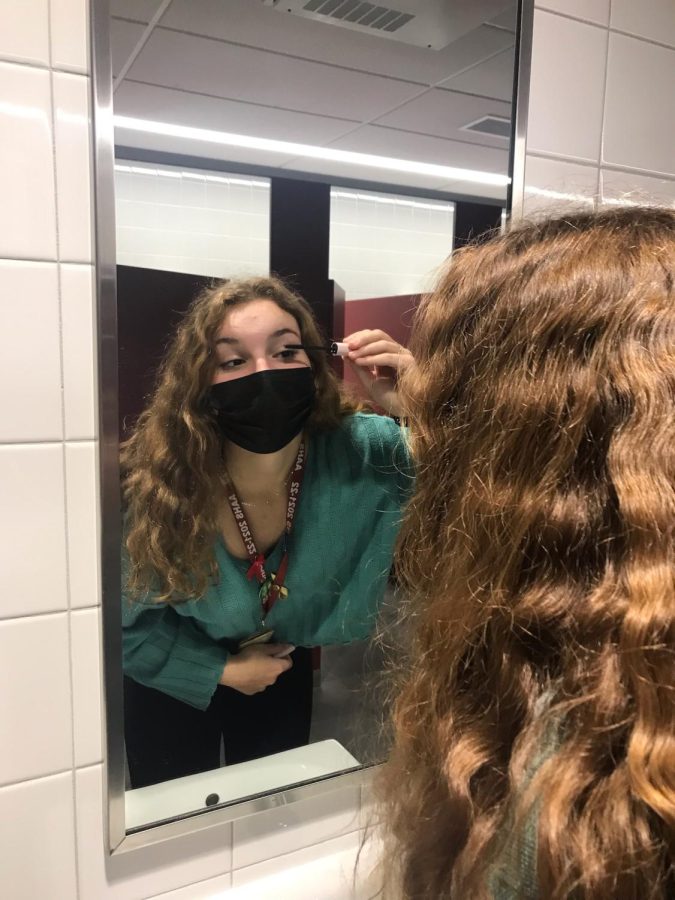Students discuss pressures of unrealistic beauty standards
Sophomore Olivia McMinn applies mascara. McMinn got ready for the day ahead by applying makeup.
October 26, 2021
In the world today, some teens feel the need to live up to the beauty standards set by social media. Beauty standards are often defined in terms of hairstyles, skin color and body size.
“Unrealistic body standards have developed over years of a social standard and hyper focus on marketing beauty products to women to create an insecurity that pressures them to look a certain way,” junior Bella Davis said.
Davis and other students believe that unrealistic beauty standards create insecurities in women and force them into a social standard.
“Unrealistic beauty standards have been around since cosmetics began being marketed. The insecurities tend to get passed down generationally from parent to child,” Davis said.
Davis also believes that social media has very negatively affected beauty standards, and over time has made them more unrealistic for people to achieve, and to feel confident about themselves after seeing these people on social media platforms such as Instagram and Snap chat.
“There’s also the growth of social media where the way you appear to other people is crucial to social status and further contributes to unrealistic standards,” Davis said. “Instagram influencers market weight loss products and routines to stay healthy, yet get surgical work done to appear the way they claim the products and routines would work. Young girls are often oblivious to this and are led to think the only way they can look the way they aspire is by endangering their health.”
Men are also affected by unrealistic beauty standards.
“Men get treated like social outcasts if they show anything other than total masculinity; that causes stress in men to try and be the ‘perfect guy’. If you fit in anything but that toxic masculinity standard that is held you’re not going to be a part of that group of guys because you aren’t man enough,” senior Kadince Nedimyer said.
Some students also believe that young boys are targeted by unrealistic standards.
“A lot of young boys have access to edited photography and are body shamed just as much as girls the same age are. A lot of older men grew up with only one agenda for males to be incredibly masculine, but many boys are starting to realize there is more potential for them than having to be seen as a ‘big man’ or the man of the house when they grow up,” Davis said.
Nedimyer and Davis believe teens are affected by unrealistic beauty standards more than the average person.
“We are all still impressionable. We tend to have this mentality of believing we need to be better than everyone else, so more can be expected which causes an increased amount of bullying involving the way one looks,” Nedimyer said.
While students believe teens are affected by unrealistic beauty standards the most, Davis believes young children are also susceptible to trying to fit into unrealistic beauty standards.
“Kids have access to a lot of the internet from a young age now, and I think that can make them try to fall into certain beauty or social standards at a much younger age than they would have in the past,” Davis said.
Many students are fed up with the consent beauty standards imposed on them every day, and just want to live life without worrying what others think about them.
“Beauty standards are extremely high anymore, and if people don’t follow them they are immediately thrown to the side. I don’t think these standards should be as strict as they are. It’s just become a little too much,” Nedimyer said.









